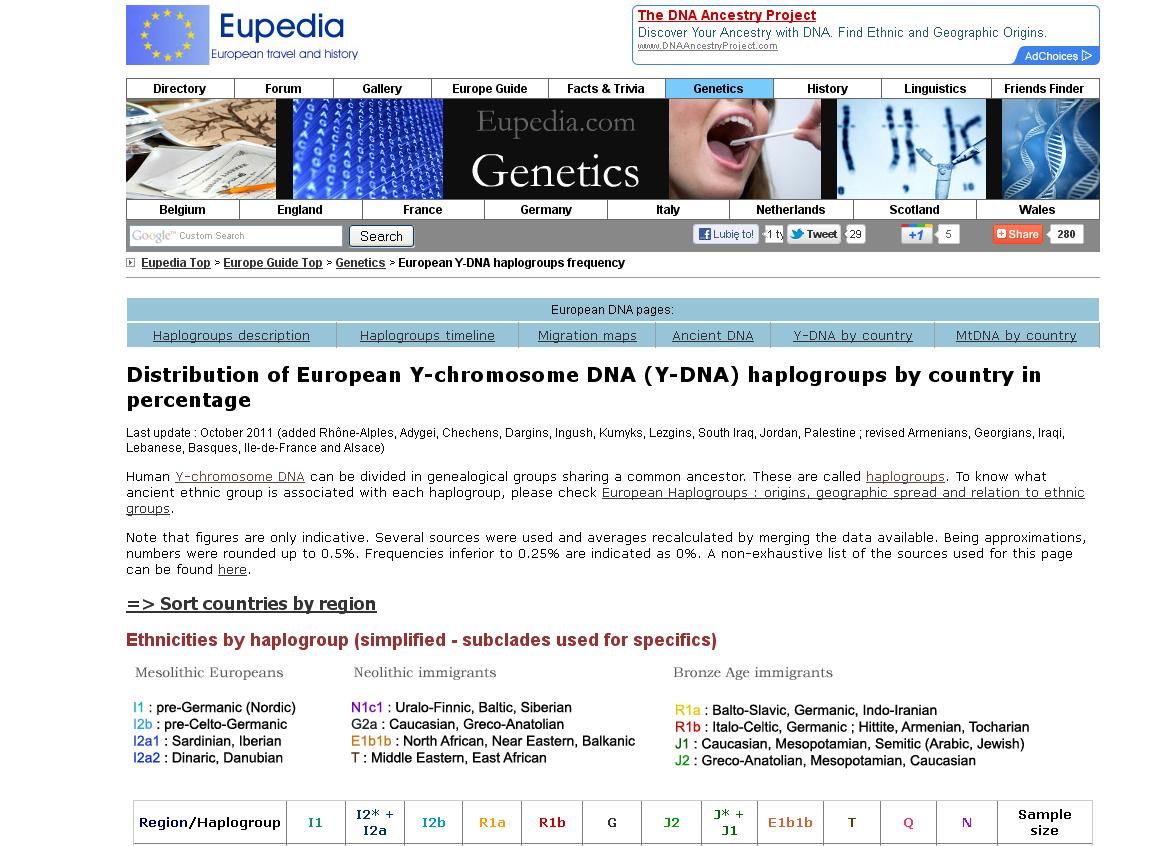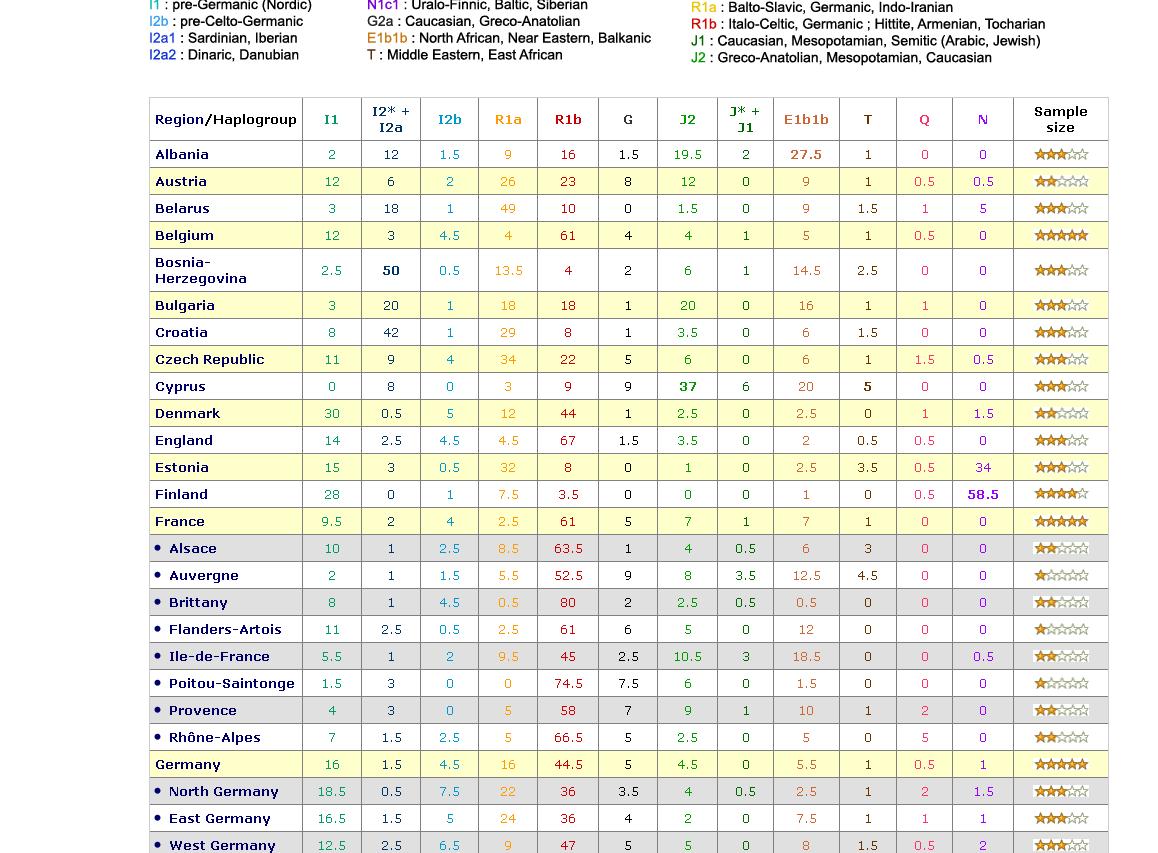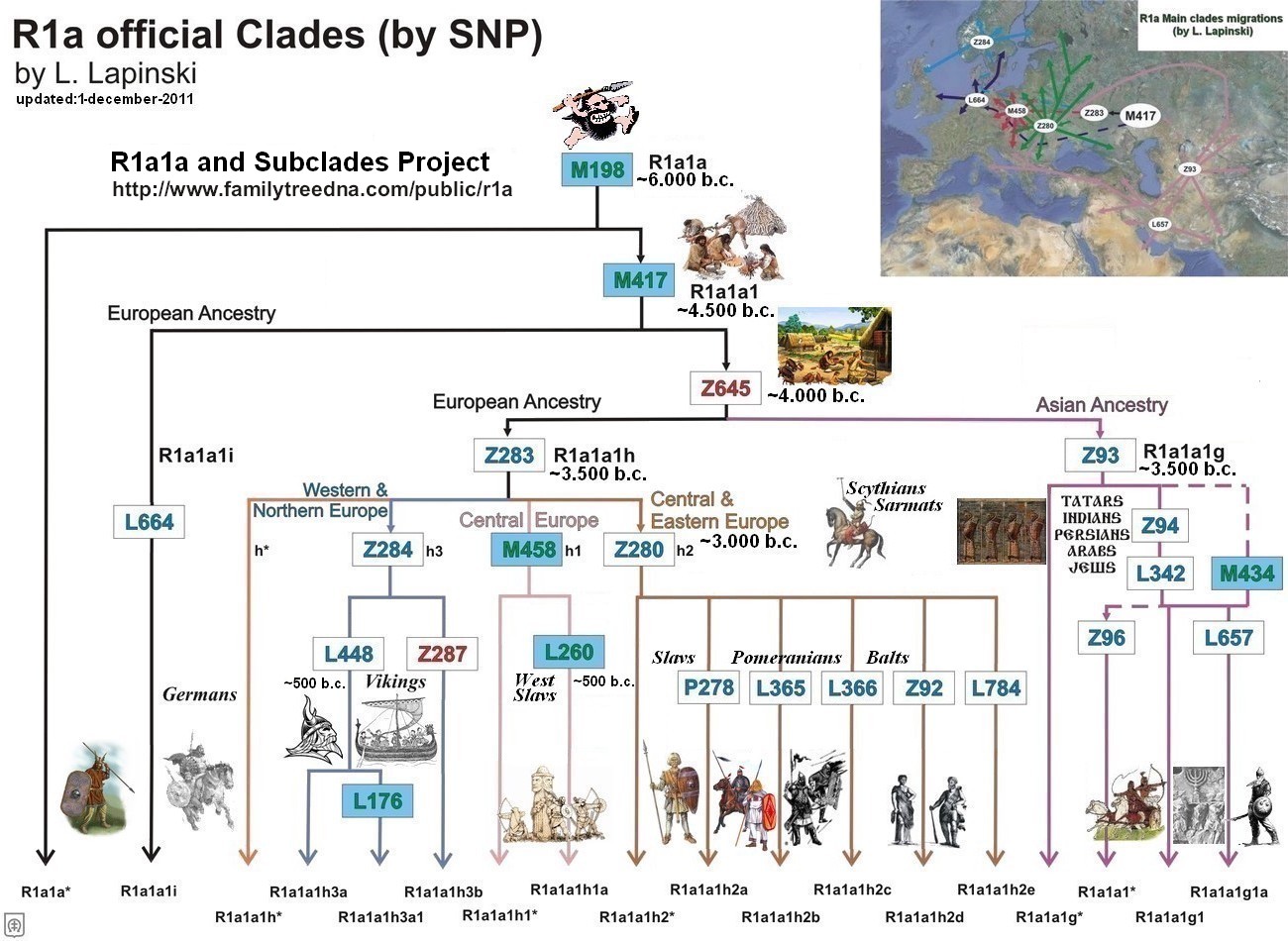© by Czesław Białczyński
© translated by Katarzyna Goliszek
Posted in by bialczynski on 21 st February 2012
Highly enlightened groups of people in Poland are continually telling Polish people that they are obsessively nationalist, pan-Slavic, xenophobic, chauvinistic or racist, and sometimes even fascist. I wonder what the enlightened Europeans, Europhiles, refined people from Berlin and Paris will say and how they will explain to us unrelenting Germanophile and pan-Germanophile tricks used on
Anglo-German Internet sites about the Genetic Project where a classification of races based on genetic research of male haplogroups Y-DNA is carried out. http://www.eupedia.com/europe/european_y-dna_haplogroups.shtml
This site contains obvious forgery and is real evidence for warping the facts for the glory of the Master Race Germans. If we did something similar in Poland, the same Polish Enlightened Europeans would make us be locked in a mental asylum, or even in prison. At least, they would require the Internet censorship and closing our fascist www sites where we do apparent nazism.
Here is the mentioned Eupedia website (you have to click on and magnify it):
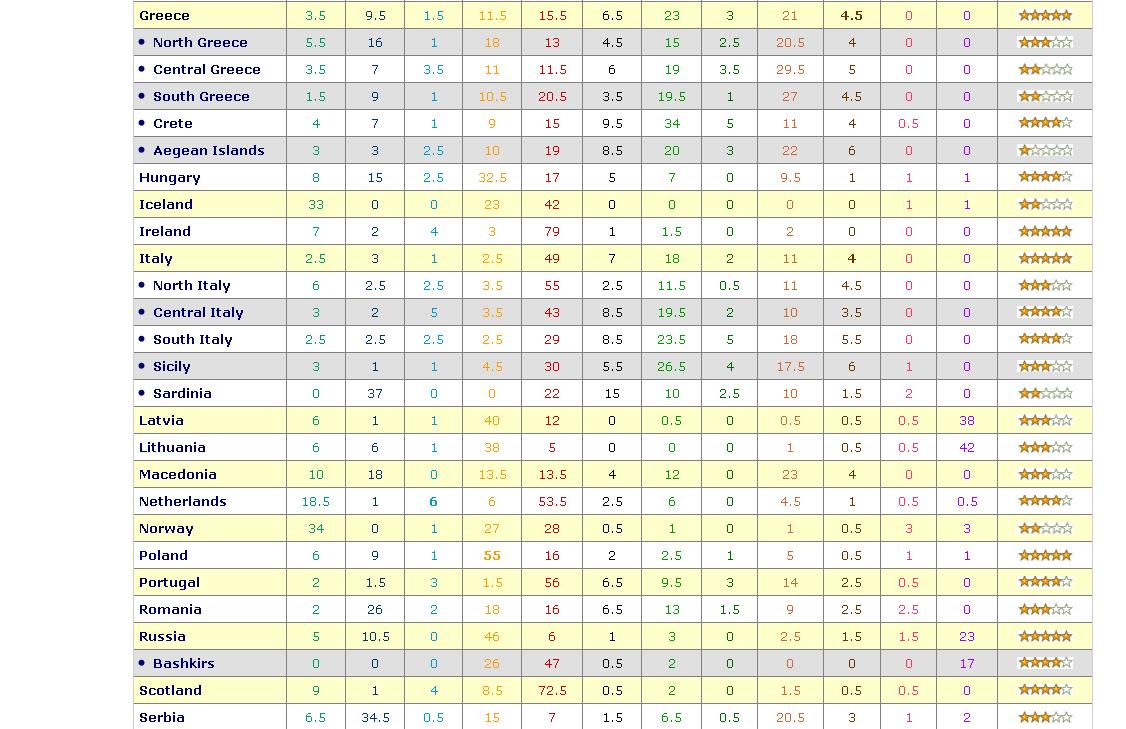
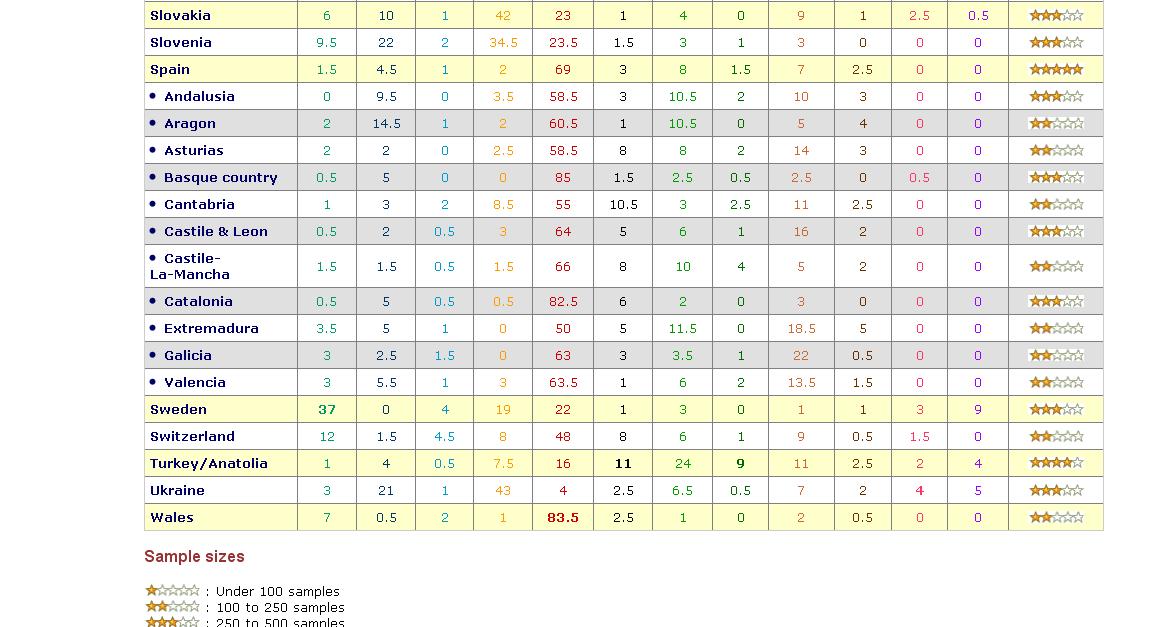 This chauvinistic, racist, pan-Germanic trick was used to describe races, that is the haplogroups in the headline above the same table. Here is the Y-DNA haplogroup (the male DNA chromosome indicating a race) called I1 as well as haplogroup I2 – both of which were called here as follows:
This chauvinistic, racist, pan-Germanic trick was used to describe races, that is the haplogroups in the headline above the same table. Here is the Y-DNA haplogroup (the male DNA chromosome indicating a race) called I1 as well as haplogroup I2 – both of which were called here as follows:
I1 – Pre-Germanic (Nordic)
I2b – Pre-Celto-Germanic
I2a1 – Sardinian, Iberian
I2a2 – Dinaric, Danubian
It is obvious forgery because it is commonly known that I1 and I2 haplogroups belong to non-Aryan people, how so accordingly these non-Aryan people can be pre-Aryan. Germanic people regard themselves as Indoeuropeans – at least they had done so till 2010 when genetic research refuted their mythology about their HIGHER Race and their HIGHEST origin as well as their pre-proto ancient times, and as a consequence their HIGHEST contribution to the development of civilisation in the Universe (the invention of the wheel and pasta).
It is the first forgery which is to convince you that you will find Pre-Germanic or Pre-Celto-Germanic in every European country you think about. However, genetics is not good old shells or just excavations which can be freely manipulated and directed at someone’s advantage. Well, what made them place themselves in the despised by them racial mosaic – old European people? Indeed, something happened, namely it turned out that there is no place for them among Indo-Aryan races – they are not a pure race! They are the mixture of three races, none of which can be called Germanic.
Making the things more ridiculous, they totally put themselves into the mosaic of the Race of Servants and Slaves – Slavic people, that is haplogropu R1a where they place (I suppose with a great pain of the Germanic heart) Balto-Slavs, Indo-Iranians and … Germanic people. Of course, Germanic people are also in the R1b haplogroup. It really surprises me that they have not placed themselves in a typically Jewish haplogroup J1, or in north African – E1?! All in all, there are a great number of ”black” Germans in Germany nowadays.
Noticeably, there is a serious problem with Germanic people, that is with Germans, Scandinavians, and the English. They have been always everywhere but it really turns out that they are nowhere. This problem reminds of the one that German science imputed to the Slavs – contemporarily they were everywhere in the 2/3 of Europe and Asia, were largely dispersed in almost all countries in the world and it was impossible to explain. According to German science fabricated for fascist needs for the XXth century science about archeological cultures, there was no place for them anywhere in the past. They appeared like a devil from a box, jumping out from primitive shacks and swamps in the Vth century AD (even from the IXth century – as it was widely spread till as late as the 70s of the XXth century) and suddenly they flooded the world wonderfully multiplying as bread in Christ’s hands. Probably, if this evident forgery had been committed in a different place, it would be necessary to discuss these issues with them for the next 100 years. Because, after all, they are open, with no inferiority complex, more enlightened than Our Enlightened, they are not used to criticising each other for their nationalism and their national fobias. Fortunately, it is enough to have a look at the detailed columns below on the same page to see what the things are really like.
Let us take into account such countries as France or Romania first to have a close look at what races make up the ethnos of these countries. They are two countries of the Romance language group, situated far from each other:
France – a very bizarre, multiracial country in which a decisive prevalence, however, owns – Y-Dna R1b which all, except for Germanic people, recognise as Celtic. There are not any Celts as a nation (only the Irish and the Welsh speak a bit of Celtic) so they can not defend themselves, but if I were in the French people’s shoes, I would protest – their language is not even a Germanic linguistic group.
R1b is 61% here. France is filled up with the conglomerate in which the most numerous are ancient Europeans from I1 and I2 groups together – 15,5% (including I1 – 9,5%), adding to that a significant number of Y-DNA J2 – Greek-Mezopotamian – 7%, and E1 – North-African-Balkan.
And what about Romania? In Romania where there is a mixture of four races the decisive one in over 80% is an ancient European factor (Veneti, also called Thracians before, or Illyrians) 12 – 26%, Slavic people R1a – 18%, Celts R1b – 16% as well as Greek-Anatolians (Semites, Jewish, or Caucasian race for J1 is related to them), who are also called Greek-Mezopotamians or Caucasians J2 – 13%.
There are not any traces of the German language in either of the two countries. There are neither traces of Scandinavian, nor English there. But, with the 1/5 of Slavic people in the Romanian population, which means slightly below 20%, these are significant influences of Slavic languages. The Romanian language is certainly a Romance language, but strongly slavicised – Centum.
This example clearly demonstrates that people with haplogroup I can not be regarded either as Pre-Germanic or Pre-Celto-Germanic at all. This group has not preserved their language anywhere, although it had an influence on shaping of a new language, on its centumization beyond countries with the dominance of Slavic people. It may also turn out that this group of people has preserved the language in one country if it is their influence that prevails in Hungary.
Well, where is Pre-Celto-Germanic then? Is it likely to be R1b? There are so many of them in Germany, great numbers. Yet, it appears not to be true! R1b must be purely Celtic since other Romance countries with Romance languages and purely Celtic ones with the Celtic language arose on its basis, first and foremost Italy and Spain, where it would be hard to put German and English languages together with Latin, Italian or Spanish. There is Portugal as well. There are many of them in North Africa, too – qqq but not German.
R1b is present in Italy in 49% and several percent of J2 and E1 as well. In Italy, the I haplogroup is hardly present. Italy is a racial mixture of mainly the Celtic race, with the Greek-Mezopotamian and North African mixture.
Spain as a culture and linguistic ethnos presents itself even worse: here the Celtic race R1b is 69%, 7% of E1 and J2, and the rest are slightly mixed.
Well, maybe Romance languages should make up a German-Romance group so as to save the honour of the German race? But will anyone believe that Latin, Italian and Spanish – to put the things simply and briefly – derive from German or Swedish? We will certainly find something from Latin in German than the other way round.
The final nail in coffin and evidence that R1b are Celts – and not any Germans at all – come from two countries being a contemporary Celtic racial and linguistic support – Wales and Ireland: HERE RESPECTIVELY – Wales R1b: 83,5% and Ireland: 79%.
Where there is prevalence of R1a – there are Slavic languages and strangely enough Baltic languages – when R1a is linked with a strong dominance of N (Finnish-Siberian haplogroup). Well, Baltic languages rose on the basis of two mixed races – Slavic people (R1a) and Siberian-Finns (N). There is no Ugro-Finnic race because Hungarians do not have the N haplogroup almost at all at. From all accounts, there is not an old race of Balts-Aesti because according to ancient Roman chronicles they are Slavic-Finnish.
Here are the examples:
Poland: 55% R1a, 16%-R1b, 15% – I
Russia: 46% R1a, 10% I2
Belarus: 49% R1a, 10% I2
Ukraine: 43% R1a, 21%I2
Slovakia: R1a – 42%, R1b – 23%, I2 – 10%
The Czech Republic: 34% – R1a, 22% – R1b, 11% – I2. In all these countries Slavic languages are spoken.
The Balkans is a different issue where it turned out that the Slavic minority often imposes their language on Old Europeans from the I2 group.
Serbia: R1a34,5% and 20,5% E1 (African) are the vast majority of the population – it is interesting that there are almost no Celts here.
Croatia:42% I2 and only 29% R1a – but it is enough to speak Slavic
Bosnia: 50% I2 , 14% E1, 13,5% R1a – and it is sufficient to speak Slavic
Slovenia: 34% R1a, 23,5% R1b, 22% I 2 – the Slavic language
Macedonia: the largest group here is African E1 – 23%, apart from that almost equally R1a – 13,5%, R1b-13,5%, and slightly less I1 – 10% i I2 – 18%, and J2 – 13% – a total genetic mixture – a very interesting country where Slavic is spoken
Bulgaria: 20%I2, 20% – J2, 18% R1a, 18%R1b, 16% E1 – and yet the Slavic language
Hungary is an interesting example.
Hungary: 32,5% Slavic people (R1a), 17% Celtic people, (R1b) , 15% I2, 8%I1, J2 – 7%, E1-9,5%. there is only 1% N – Finnish-Siberian. Did the 1% impose the language on all? It would have been a phenomenon – there might be another explanation and solution. It might be Old European joining I1 and I2 features with J2, which would be 30% of the population. Then it could be clear that the Slavic language did not go through the Old European stratum. Of course, it is not true that Hungarians originate from the steppes of Asia, or we can suppose that Huns were R1a and Eurasian Avars R1a as well – so they were Slavic because the rest of Hungarians make up Old Europeans, Celtic people and North-Africans. Are the Ugro-Finns just one language group for sure?
Now, have a look at how Baltic languages arose:
Lithuania: 38% R1a and 42%N – the Baltic language (Slavic-Finnish) – additions of I are a lot smaller: 6% of both I1 as well as I2
Latvia: 40% R1a and 38% N – the Baltic language (Slavic-Finnish) – I: 6% I1 and 1% – I2
Estonia: 15 % I1, 32% R1a, 34% N (the Baltic language (Slavic-Finnish)
As a comparison – Finland where R1a was merely 7,5% , the country is made up of mainly such races as I1 – 28% and N – 58,5% – the Finnish language.
With a vast majority of R1a in a given country, there are Slavic languages and where there are a vast majority of R1b, Romance-Celtic languages. In terms of a pure genetic race Germanic people are not present with their language group anywhere. They are just absent. The birthplace of Germanic nations is Scandinavia – where the I1 race is mixed with R1a and R1b – so North Veneti – that is ancient Europeans, Slavs and Celts – from this mixture Nordic languages were formed. Later on, after moving to the continent from Scandinavia between 500 and 100 BC –ANGLO-GERMANIC (ENGLISH AND GERMAN) arose after the next intermingling with continental Celtic and Slavic people on the Elba and the Oder Rivers.
However, Eupedia sees Germans everywhere, of course, particularly where Romance and Slavic languages dominate. At the same time, Eupedia lost European natives somewhere. Eupedia gives them many variable names. However, the tables below demonstrate that they exist and are all right as belonging to the I1 and I2 haplogroups. They are not Aryans for one time and Old Europeans for another – they have always been Old Europeans, who started to inhabit this continent first.
We do not intend to postulate placing Slavic nations wherever there is I1 and I2 as Pre-Slavic. I would suggest that we let I1 and I2 be what they were.
Indeed, pre-Germanic nations are a mixture of all: a bit of Slavs, a bit of Celts (they are the vast majority among them so their language is centum, and as for grammar it is a Slavic-Celtic mixture, fewer cases than in Slavic languages and more than in Celtic ones), a bit of Old Europeans and also a bit of Semite (J2) whom Germans tried to eliminate as a race in Auschwitz.
Instead of trying to stick to the R1a and I haplogroups at any price, it is better to acknowledge that people of this race and ethnos make up an inherent part of Scandinavian-Anglo-Germanic nations. They should be proud of the fact that such a young ethnos that came into being in just 500 BC after Scandinavians arrived in the European continent and that the ethnos that arose from the mixture of Aryan and Old European races gave their language and their scientific and technological achievements as a bond and civilisational drive for the most of the civilised world of the XXIst century. A thoughtful person can not deny that Scandi-Anglo-Germanic nations have not done so.
Update 27.12.2011
Because this topic as usual evokes a furore and discussion, I enclose the table which fairly reasonably shows contribution of the Slavic haplogroup R1a in contemporary Viking, Germanic, Pomeranian, West Slavic, East Slavic, Persian, Tatar, Hindu and even Semitic or Arabic ethnoses.
Because genetic forums are already developed and discussion, data modification are being continuously done, it is worth using the links as for us historic genetics is just another issue, though really important to settle the Slavic nations’ share in archeological cultures and the past of European Neolithic Age and to determine cultural heritage of Slavic nations and our ancestors’ heritage.
Here is the table:
Click and magnify
Other links:
http://www.forumbiodiversity.com/showthread.php?t=19706
http://en.wikipedia.org/wiki/Haplogroup_I2_(Y-DNA)#I2a1b1
http://arslanmb.org/ArmenianDNAProject/WarpedFounderTree-14.pdf
http://eurogenes.blogspot.com/ :
No Goths in Northern Russia or near the Baltic?
http://www.forumbiodiversity.com/showthread.php?p=635630#post635630

